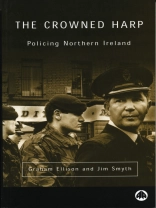This book is a detailed analysis of policing in Northern Ireland. Tracing its history from 1922, Ellison and Smyth portray the Royal Ulster Constabulary (RUC) as an organisation burdened by its past as a colonial police force.
They analyse its perceived close relationship with unionism and why, for many nationalists, the RUC embodied the problem of the legitimacy of Northern Ireland, arguing that decisions made on the organisation, composition and ideology of policing in the early years of the state had consequences which went beyond the everyday practice of policing.
Examining the reorganisations of the RUC in the 1970s and 1980s, Ellison and Smyth focus on the various structural, legal and ideological components, the professionalisation of the force and the development of a coherent, if contradictory, ideology.
表中的内容
Introduction
1. Policing Nineteenth-Century Ireland: Setting the Parameters
2. Policing After Partition: Constructing the Security Apparatus
3. Policing Under Stormont
4. The Impact of Civil Rights on Policing: Collapse and Failed Reform
5. Criminalisation and Normalisation: The Counter-Insurgency Solution
6. Legitimacy, Counter-Insurgency and Policing: The Legacy of the 1970s
7. Shooting to Kill?
8. Collusion and Death Squads
9. Symbolism, Surveys and Police Legitimacy
10. Epilogue: The Patten Report on the RUC
Notes
Bibliography
Index
关于作者
Jim Smyth is an expert on policing in Northern Ireland. He is the author of The Crowned Harp (Pluto Press, 2000).












